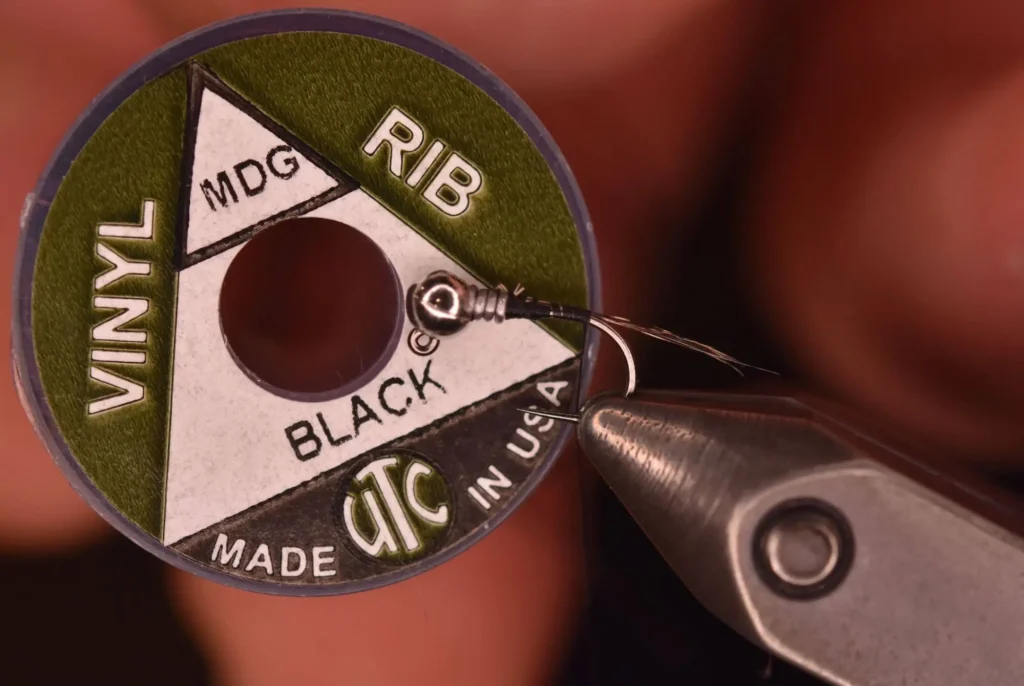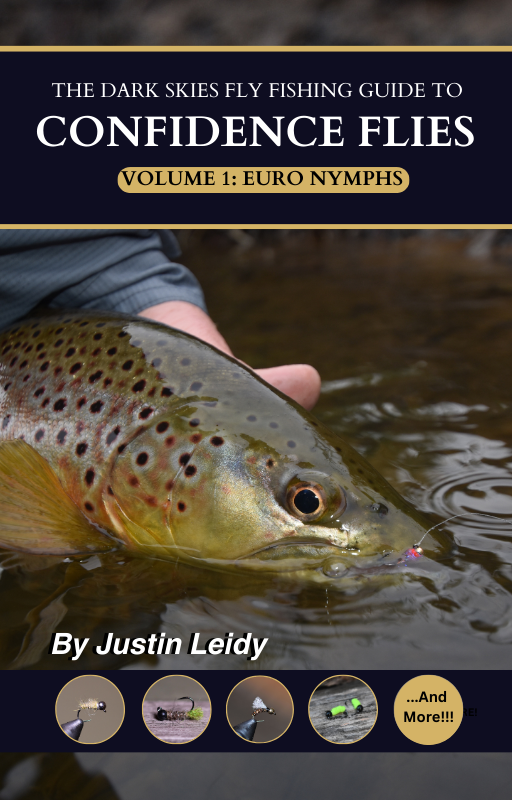Fishing and Tying the France Fly

The France Fly is a pattern that I recently discovered and started fishing the spring season of 2024. I first came across this simple pattern in Josh Miller’s book Euro Nymphing: Tips, Tactics and Techniques. Rarely does a new nymph pattern outperform my favorite confidence flies such as Walt’s Worm, Hare and Copper, Eggstasy Egg, Killer Bug or Frenchie. Nevertheless, the realistic and simple France Fly has seemingly achieved this feat over the course of just one fishing season. As a matter of fact, I venture to make the claim that of the hundreds of trout that I have brought to hand these past few months, nearly 25-30% of them took a France Fly. Trout of all species, wild and stocked, pressured or never fished over readily accept a well-presented France Fly, and based on anecdotal observations, I have a few ideas why this is the case.
A Brief History of the France Fly
Credit for the France Fly’s development originates from the USA Youth Competition Fly Fishing Team. A youth world champion fly fishing competitor, Hunter Hoffler, developed and fished this fly to great success all over the world. On his site, tacticalflyfisher.com, Devin Olsen writes about a conversation he had with Hoffler concerning this venerable nymph:
“It is honestly a fly that I have been using forever but it earned its name when I was shadowing the team for the world championships in France, the one before my first world championship. The fishing on all the rivers was pretty tough. It was a lot of skinny, warm water and required light nymph presentations that a lot of the members at the time were not used to. We needed a realistic fly that was easy to fish high in the column but also was hydrodynamic enough to tuck cast and get into the few deep runs where we found a few grayling.
“We were struggling pre-fishing on the Lot River, everyone was catching maybe 7 to 12 fish a day and working hard for them, so while everyone was practicing on another venue, Paul Bourcq, Chris Lee and I went and tried to figure the Lot out. I fished the fly by itself on 7X and caught about 25 fish in one hour… and the France Fly was born. I’ve probably caught more fish on a size 16 silver beaded France fly than any other fly I’ve ever tied by a longshot.”
My history tying and fishing the France Fly is not nearly as storied. Nevertheless, I do know that this nymph tied in both #16 and #18 with silver or copper beads has produced many trout for me, too.
Simplicity
Indicative of all Euro nymphs of preference, the France Fly is remarkably simple to tie, imitates natural food sources, sinks like a bomb, and remains largely inexpensive to produce. To spin one of these up, only five common materials are necessary: 8/0 thread, jig hook of preference, slotted tungsten bead, UTC vinyl rib in size Midge, and Hare’s Ear Plus Dubbing.
There are no trailing shucks, flash, wing cases or legs, parts that I believe are unnecessary and gaudy. The profile not only imitates natural mayfly nymphs but readily sinks because of the super slim and heavy design falling quickly through the water column.
I have noticed when flipping rocks in local streams, most mayfly nymphs are dark in color ranging from blacks, browns, mustards and olives. However, a contrast between darker and lighter body parts is usually present and this is a feature I always include in my nymphs.
Additionally, active mayflies typically have shorter legs while crawling or keep them tucked close to their body while swimming. They do not have many large parts hanging from them. I have also observed that real-life mayfly nymphs do not possess bright and flashy colors! Why would they when their goal is to remain unseen and camouflaged amongst the substrate, hidden from scores of predatory fish? The France Fly successfully achieves all of these characteristics of natural aquatic insects.
- Size 16-18 jig-style hook. The Model 20 available through Wholesale Fly Company is a great hook at an exceptional price. The Fulling Mill 5045 is another great option, but keep in mind that Fulling Mill hooks typically run one full size larger than most brands.
- Tungsten beads of your choice. Silver is a great color for this pattern, but also try tying it with copper and black.
- Tail: 4-5 fibers of Coq De Leon.
- Body: black vinyl rib, Midge size.
- Hare’s Ear Plus Dubbing in natural #1 color.
- Tan or gray thread in 8/0 is preferred for this pattern.

Place a slotted bead onto a jig hook and insert in the vice. Place four or five wraps of lead wire on the hook shank and slide this tightly against the bead to hold it in place. Start the thread on the hook and build a dam to hold the wire firmly, finally covering the lead with thread wraps.
At the bend of the hook, tie in a clump of 4-5 CDL fibers for the tail about one hook shank long. This next step is both crucial and tricky. Tie in a several inch length of the vinyl rib directly on top of the hook shank and up to the end of the lead wire. This will create an evenly tapered body. Bind this down tightly with even thread wraps taking care not to build up too much bulk or high spots.
Beginning at the base of the tail, counter-wrap the vinyl rib two-thirds of the way up the hook shank and up over part of the lead underbody. Vinyl stretches, so vary the tension while wrapping to get a desired segmented appearance. Bind the vinyl rib down tightly with thread and snip it off flush.
Next, create a loose and sparse dubbing noodle on the thread and construct a thorax/collar with the Hare’s Ear Plus. The thorax should be a bit larger than the diameter of the abdomen and do not worry if guard hairs are present to provide that spiky look. Finally, whip finish neatly behind the bead.
I do not include a thread hotspot on my version of the France Fly, but this is certainly possible. I feel that the black vinyl abdomen and light thorax provides enough contrast in color for this pattern.

My Favorite Version of the France Fly
Like many simple Euro flies, such as the Frenchie and Walt’s Worm, the France Fly is also versatile and can be tied using the colors to match local insects. Both the vinyl ribbing and Hare’s Ear Plus Dubbing are available in a variety of colors. As a matter of fact, clear vinyl ribbing can be used with a thread underbody to essentially create a France fly that is nearly any color on the spectrum. Nevertheless, there is one color combination that I exclusively tie and use, and this pattern remains what I believe to be the original France Fly.
My favorite France Fly color variation begins with a silver or copper slotted tungsten bead. (More on the times to choose to fish a silver or copper bead later!) I largely prefer using Coq de Leon (CDL) as the tailing material for my Euro style nymphs. This feather has very thin and stiff fibers making for a sparse yet durable tail. I also prefer the naturally barred appearance of this fiber. CDL colors I readily use are dark and medium pardo and ginger speckled. I cannot say that any one of these three tail colors has an advantage over another, and I genuinely use what happens to be laying on the surface of my tying desk at the time.
Next, I prefer the black UTC vinyl rib in size Midge for the abdomen. This material provides a dark segmented look that imitates natural mayfly nymphs very well. Finally, for the collar, or thorax if you will, I prefer natural Hare’s Ear Plus Dubbing. The black abdomen with the natural rabbit fur creates the crucial color contrast in this nymph that imitates so many natural mayfly species, and it includes just enough sparkle to grab a hungry trout’s attention without spooking cagey fish. Using this nymph when mayflies are active in the stream will result in good numbers of trout in the net!
Fishing the France Fly
The France Fly can be fished as a single fly in skinny water. It is largely effective for picking fish out of riffles and pocket water because these are the places in which real mayfly nymphs live. I have had great success on central PA limestone creeks, deliberately and tactically, targeting soft seams and pocket water with a France Fly.
However, my favorite way to fish a France Fly is as a tag, 15-20 inches up from my point fly, in slightly deeper riffles and runs. I have found that trout readily eat this pattern when fished away from the bottom and suspended in the water column. As the France Fly is fished, the guard hairs and fur fibers in the collar become spikey and buggy looking. I suspect that this quality provides the appearance of an emerging mayfly. The more tattered and beat up a France Fly becomes, the more trout seemingly eat it.
Concluding Ideas
A look inside of my nymph boxes bestows row upon row of Walt’s Worms, Frenchies, Hare and Coppers, and Killer Bugs. But the number of rows dedicated to the France Fly is steadily growing. I love the fast rate for which this fly pattern sinks, providing me depth and drift control using my line hand and rod tip. I also appreciate the versatility in which this fly can be tied and fished coupled with it being a fantastic imitation of natural mayfly nymphs. For these reasons, the simple France Fly has become a confidence fly that I readily select when beginning a new fishing session on the water.
Did You Find This Fly Tying Guide Helpful?
Stay up to date with the Dark Skies Fly Fishing monthly newsletter for free and receive the latest posts in fly fishing news, tricks, tips, and techniques, stream reports, as well as updates on new flies added to the Online Store and exclusive discounts!
Sign Up NowDownload our eBook "Confidence Flies: Volume One, Euro Nymphs" for free today when you sign up for our newsletter!

Have a fly fishing question you’d like answered? Drop us a line at info@darkskskiesflyfishing.com! If we use your question in a blog post or in the newsletter, we’ll send you a FREE fly box with a dozen of our favorite nymphs and dry flies!

Not a france fly